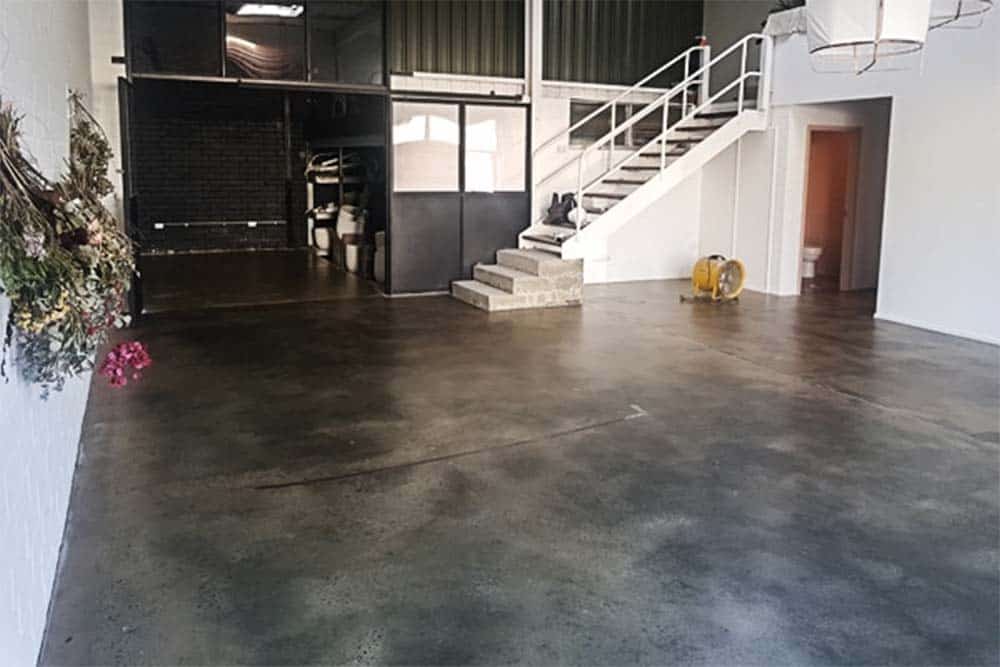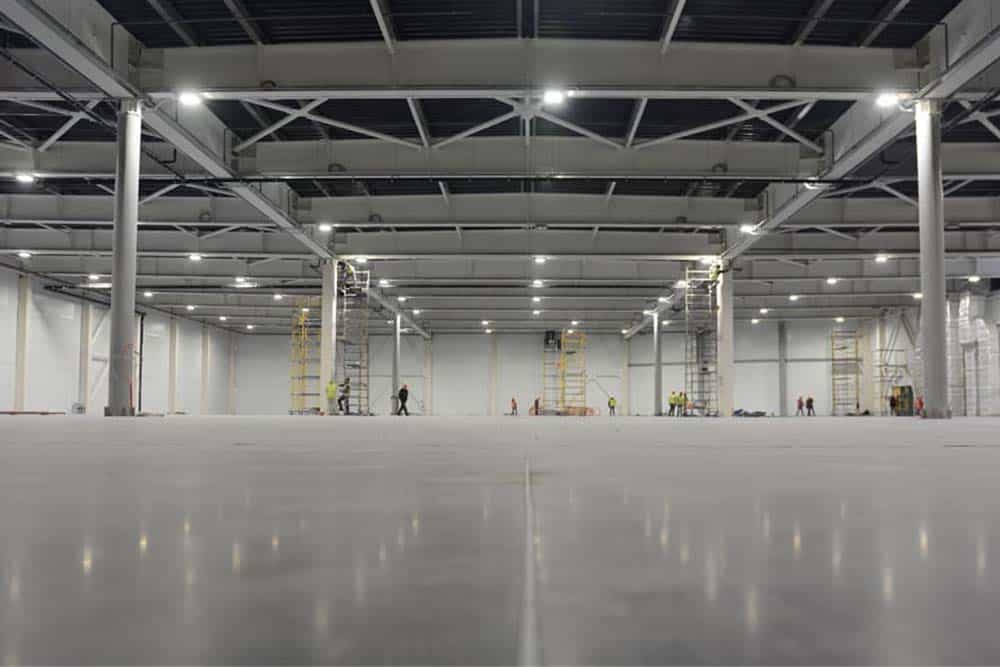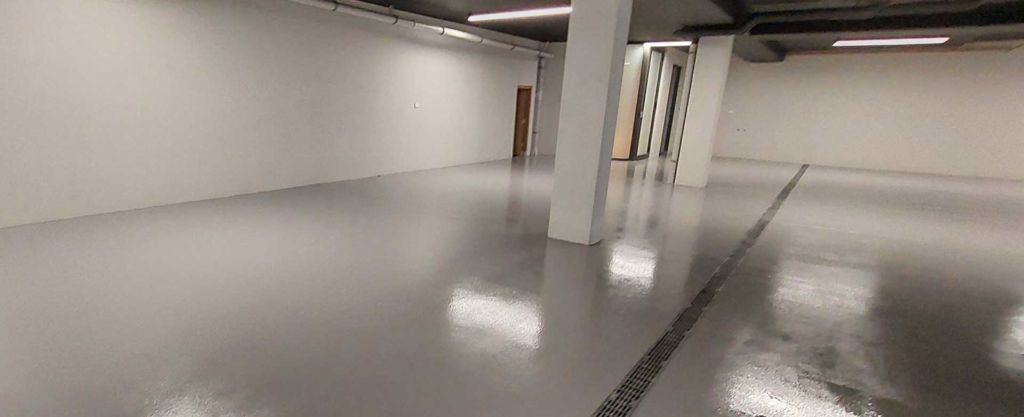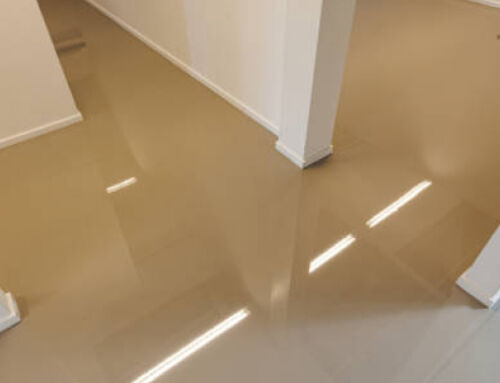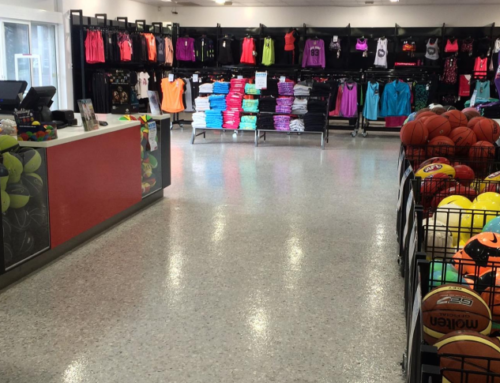Is your floor looking scuffed, damaged, and overall worse for wear?
This can not only negatively impact the attractiveness of your floors, but also decrease the integrity of your floors and lead to more cracks and damage in the future. In a domestic setting, this can lead to expensive repairs or dangerous hazards for kids and pets. In commercial sites, tired and old floors can leave customers with a poor impression of your business.
Luckily, polishing your concrete floors can maximise shine, increase its retail value, and help you create a sparkling new environment in a snap.
Ready for the simple, step-by-step to polish concrete floors? Here’s everything you need to know about the process.
Why polish your concrete floors?
First thing’s first: why should you polish concrete floors, and how often is this necessary? Well, polished surface can come with a lot of benefits.
Namely, it can:
✔ Eliminate Dust
Unpolished surface can easily get dusty as tiny dust particles are pushed to the surface of the stone. Over time, this can give your Perth home or business an unkempt appearance, increase maintenance costs, and lead to sanding-like damage over time. Polishing your surface eliminates this dust, thereby improving the appearance of your floor and decreasing maintenance needs.
✔ Improved Aesthetics
Polished surface is much more reflective than its unpolished counterpart. This can make your whole space feel more put together and improve the lighting in your facility or home. The ‘WOW’ factor that comes with polished flooring is simply impossible to ignore.
✔ Increased Safety
Polished concrete is stain-resistant and slip-resistant. This is because polishing and sealing the surface of unpolished floor helps get rid of the porous texture and create a surface that can repel water, oil, chemicals, and other contaminants. This makes it a particularly safe and low-maintenance choice for warehouses, factories, and laboratories throughout Perth.
Learn more about our non-slip flooring options here
✔ Reduced Maintenance
Because a polished floor is so compacted and stain-resistant, it doesn’t require as much maintenance as unpolished floor, linoleum, tile, or hardwood. This can lead to lower maintenance costs and efforts over time. That means you spend less time maintaining your surfaces and more time enjoying them.
✔ Reduced Costs
By reducing upkeep, polished surface can ultimately reduce energy and maintenance costs. As a business or home owner in Perth, you can keep more money in your pocket knowing your floors won’t need urgent care or maintenance.
✔ Decreased Downtime
Many floor types require significant downtime during and after installation, as they must dry, cure, etc. This is not the case with polished surface, which can be put into service immediately after it is polished (without any toxic chemicals involved in the process). This can decrease downtime and help ensure that your organization doesn’t lose any money unnecessarily.
✔ Reduced scuffs and damage
The uneven, rough texture of unpolished surface can encourage a lot of scuffing and cause tires to abrade on your floor.
The result?
Scuffs, wear, and tear over time. Polished floor, on the other hand, gets rid of uneven surfaces and makes your floor much more smooth. This can prevent abrasion, scuffs, black marks, and other signs of damage on your floor – even if you’re working with heavy tools and machinery.
What are the different types of polishing?
There are two primary types: wet polishing and dry polishing.
Let’s compare each type.
Dry Polishing
Dry polishing, as the name implies, doesn’t use any water to help with the process. Instead, it uses machines that have a dust containment system – or vacuums – that prevents the air from being filled with dust. These vacuums help keep the process safe and contained.
Wet Polishing
Wet polishing, on the other hand, uses water to control the amount of grinding dust that’s released into the air. That said, this polishing method creates a significant amount of slurry, making it difficult to clean up after polishing is complete.
5 simple steps for polishing your concrete floors
Overall, polishing the surface is similar to sanding wood.
Put simply, polishers with abrasive pads are used to gradually grind down the surface until the desired level of shine and smoothness is achieved. Here’s a closer look at the steps.
Step #1 – Existing coatings are removed
First, if there is any existing coating on the floor, it must be buffed off before any further steps are taken.
Step #2 – Cracks are sealed
Next, any cracks or damage to the floor must be sealed using epoxy or another type of filler. This will help ensure that the floor is even and allow for a smooth polishing.
Step #3 – The floor is ground down
After the floor is sealed, it must be gradually ground down using increasingly fine abrasive tools. Here, the initial grinding will remove any obvious blemishes and pits that have developed in the floor, making it flat and smooth. After that, fine grinding will make the floor smooth and shiny.
Step #4 – Chemical application
Once the floor is properly ground down, a chemical hardener is applied to densify the floor.
Step #5 – The floor is polished
Next, the floor is gradually polished using increasingly fine tools. Finally – and optionally – a stain guard can be applied to help protect the surface and make it easy to maintain.
What can you do to maintain a polished concrete floor?
Once your floor is polished, how do you maintain it?
Generally, polished floors are pretty easy to maintain, and they don’t require dangerous cleaners or ongoing polishing and upkeep. That said, they are not totally maintenance-free. To keep your polished concrete floor in tip-top shape, you should follow preventative steps including:
- Dust and mop weekly (wet mop using clean, warm water) to remove any accumulated dust and grime that may have accumulated on the surface.
- Clean any spills or stains as quickly as possible to make sure that they don’t absorb into the floor and damage your polished surface.
- Avoid harsh cleaners, but give any cleaners that you do apply enough time to get rid of any grease or grime.
- Make sure that any cleaning solutions you apply don’t dry on the surface.
What to do next…
Polished concrete is a low-maintenance, durable, and cost-effective flooring option for homes, garages, warehouses, commercial showrooms, and other industry settings.
If you’re interested in installing a polished concrete floor, though, it’s important to understand exactly what the process is like and what maintenance should be. Understanding these details can help you avoid any surprises and ensure that you’ve picked the right flooring option for you.
If you want more information about polishing – or other flooring options like epoxy or coating – you can call us on 0490 777 761 or contact us directly for a free consultation.

